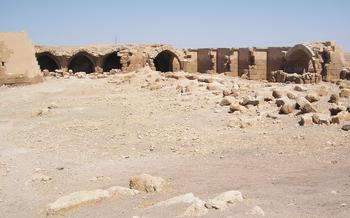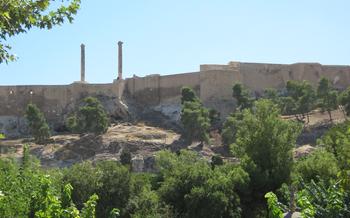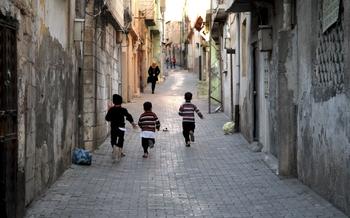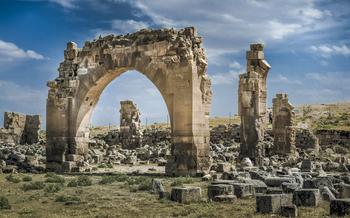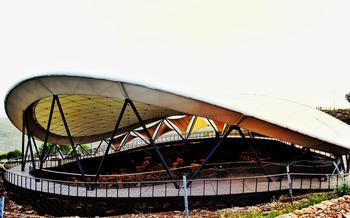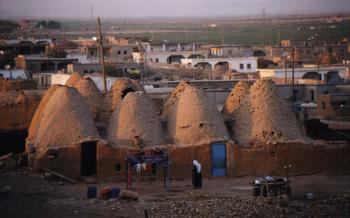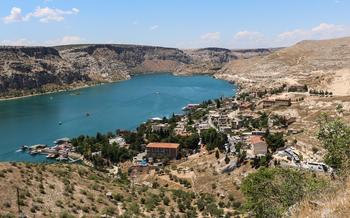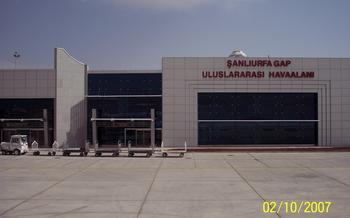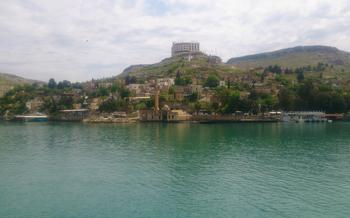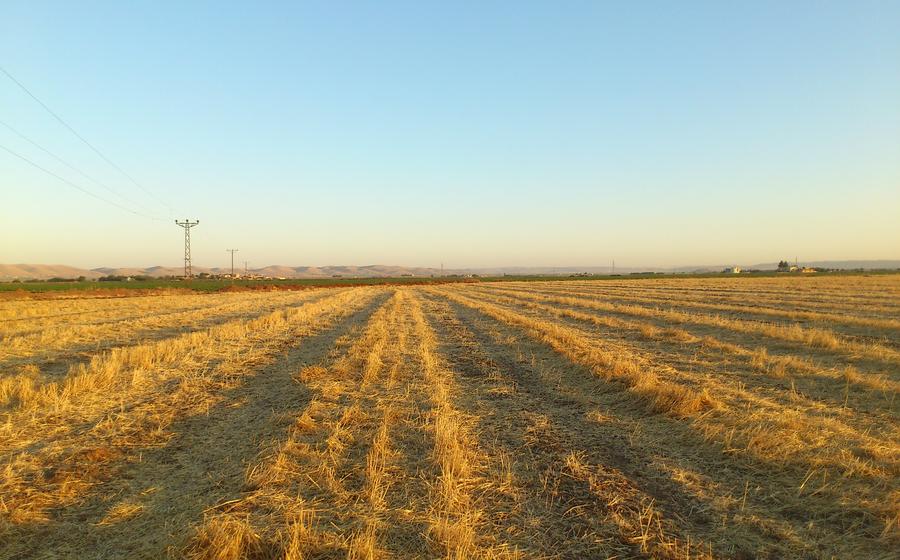
Aşağı Güvercinlik Valley
- Journey to Aşağı Güvercinlik Valley:
- Exploring the Ruins of Ancient Harran
- Journey into the Past: Göbekli Tepe
- A Labyrinth of Mystery: Karahan Tepe
- Marvels of Nature: Halfeti Village
- Discover the Art of Black Pottery
- Mesmerizing Mosaic: Eyyubi Mosque
- Unveiling History: Balıklıgöl
- Delights of Urfa Cuisine
- Step Back in Time at Şanlıurfa Museum:
- Experience the Bustling Charm of Şanlıurfa Bazaar
- Embrace the Warmth of Local Hospitality
- Embrace the Epic Legends of Şanlıurfa:
- Capture the Essence of Şanlıurfa in Photographs
- Insider Tip: Unveiling Hidden Gems
Journey to Aşağı Güvercinlik Valley:
Nestled amidst the enchanting landscapes of Şanlıurfa, the Aşağı Güvercinlik Valley beckons travelers with its rich tapestry of history, culture, and natural wonders. Step into this valley, and you will find yourself embarking on a journey through time, unraveling the mysteries of ancient civilizations and marveling at the wonders of nature.
Historical Significance: The valley holds immense historical significance, serving as a cradle of civilization and a witness to the rise and fall of empires. In ancient times, the valley was home to the thriving city of Harran, a major center of learning and trade. The ruins of Harran, with its iconic beehive-shaped houses, stand as a testament to the ingenuity and architectural prowess of its former inhabitants.
Geographical Location: The Aşağı Güvercinlik Valley is strategically located in southeastern Turkey, near the Syrian border. This strategic position made it a crossroads of cultures and civilizations, attracting traders, pilgrims, and conquerors throughout history. The valley's proximity to the ancient Silk Road further contributed to its prominence as a center of commerce and cultural exchange.
Importance of the Valley: The valley's importance extends beyond its historical significance. It is home to a wealth of natural wonders, including stunning rock formations, lush vegetation, and a diverse array of wildlife. The valley is also renowned for its rich cultural heritage, with local traditions, handicrafts, and cuisine that have been passed down through generations.
Exploring the Ruins of Ancient Harran
History and Significance of Harran
Harran, an ancient city located in the Aşağı Güvercinlik Valley, holds immense historical and cultural significance. Inhabited since the Neolithic period, it flourished during the Assyrian Empire, becoming a major political and religious center. It continued to thrive under the rule of successive civilizations, including the Babylonians, Greeks, Romans, and Byzantines.
In the 7th century, Harran became a prominent learning center for Islamic scholarship, particularly in astronomy and mathematics. Its renowned University of Harran attracted scholars from across the region and contributed to the development of scientific knowledge. The city was also a significant trading hub, connecting the East and West through the Silk Road.
Remains of the Ancient City
Today, visitors to Harran can explore the impressive remains of this ancient metropolis. Among the most notable landmarks are the ruins of the Great Mosque of Harran, constructed in the 8th century. Its unique architectural features, including the use of black basalt stones and the distinctive pointed arches, offer a glimpse into the city's rich past.
The surrounding landscape is dotted with numerous beehive-shaped houses, known as trulli. These traditional dwellings, built of mud bricks, have remained largely unchanged over the centuries and provide a fascinating insight into Harran's unique cultural heritage.
Unique Architecture and Structures
Harran's distinctive architecture, influenced by various civilizations throughout its long history, is a testament to its cultural diversity. The city's fortifications, constructed using massive stone blocks, showcase the engineering prowess of its ancient builders. The remains of temples, churches, and mosques stand side by side, reflecting the religious and cultural influences that shaped Harran's identity.
The city's unique location, situated amidst a vast desert landscape, has also contributed to its allure. Its isolation has allowed Harran to preserve its ancient traditions and customs, making it a living museum of the region's rich history.
Journey into the Past: Göbekli Tepe
Göbekli Tepe, situated approximately 15 kilometers northeast of Şanlıurfa, holds immense archaeological significance as one of the oldest and most remarkable Neolithic sites in the world. Its discovery in the 1990s has revolutionized our understanding of the origins of human civilization.
Archaeological excavations have unearthed a complex of circular structures, primarily composed of massive T-shaped stone pillars, some reaching heights of over 5 meters. These pillars are intricately carved with abstract symbols, animal reliefs, and human figures, providing valuable insights into the beliefs and rituals of the ancient inhabitants.
Göbekli Tepe's history dates back to the Pre-Pottery Neolithic period, around 9000 BC, predating the rise of agriculture and the establishment of permanent settlements. The site is believed to have served as a ceremonial center, gathering place, and possibly an astronomical observatory. Its sophisticated construction and artistic expression suggest a highly organized and advanced society.
The enigmatic nature of Göbekli Tepe has sparked numerous theories and debates among scholars. Its function and purpose remain a mystery, as no traces of permanent habitation have been found. Some believe it was a sacred sanctuary, while others propose it may have been a communal meeting place or a center for trade and exchange.
Visiting Göbekli Tepe is an awe-inspiring experience, transporting visitors back in time to the dawn of human civilization. The site's ancient structures and carvings offer a tangible connection to our prehistoric ancestors and provide a glimpse into their complex beliefs and rituals. Göbekli Tepe stands as a testament to the ingenuity and creativity of early humans, leaving an enduring legacy that continues to captivate and inspire.
A Labyrinth of Mystery: Karahan Tepe
Karahan Tepe, an enigmatic archaeological site, lies just a short distance from the ancient city of Harran in Şanlıurfa, Turkey. Its history and significance are still largely shrouded in mystery, as excavations have only recently begun to uncover its secrets.
The site is believed to date back to the 3rd millennium BC, making it contemporary with Göbekli Tepe. Its ruins hint at a once-thriving settlement, with massive stone walls, elaborate carvings, and intriguing inscriptions. However, much of the site remains unexplored, leaving archaeologists and historians with more questions than answers.
One of the most captivating aspects of Karahan Tepe is its intricate network of underground tunnels and chambers. These subterranean passages wind their way beneath the site, creating a labyrinthine maze that has captured the imagination of explorers and researchers alike. The purpose of these tunnels remains unknown, but they are believed to have served as storage spaces, shelters, or even religious sanctuaries.
Among the artifacts discovered at Karahan Tepe are numerous stone tablets and fragments inscribed with ancient symbols and writings. These inscriptions have yet to be fully deciphered, but they are believed to hold valuable clues about the site's history and the people who inhabited it.
The mystery surrounding Karahan Tepe only adds to its allure. As archaeologists continue to delve deeper into its secrets, it is likely that we will learn more about this ancient civilization and its place in the rich tapestry of human history.
Marvels of Nature: Halfeti Village
Halfeti Village, nestled amidst the fertile plains of Şanlıurfa, stands as a testament to the region's natural wonders and cultural heritage. Surrounded by breathtaking scenery and unique rock formations, the village offers visitors an escape into a realm of tranquility and awe.
As you approach Halfeti, the landscape transforms into a mesmerizing tapestry of nature's artistry. Jagged cliffs, sculpted by centuries of erosion, rise majestically from the earth, creating a surreal backdrop for the village nestled below. These rock formations, known locally as "halfetis," lend their name to the village and serve as a reminder of the region's geological wonders.
Within the village, visitors can immerse themselves in the traditional lifestyle that has remained largely unchanged for generations. The narrow, winding streets, lined with charming stone houses, lead to hidden courtyards and bustling marketplaces. Here, the locals go about their daily lives, preserving cultural traditions that have been passed down through the ages.
Halfeti is renowned for its unique natural attractions. The village is situated on the banks of the Euphrates River, which provides a lifeline for the community and creates a serene atmosphere. Visitors can embark on a leisurely boat tour along the river, marveling at the stunning views of the surrounding cliffs and rock formations.
One of the most captivating sights in Halfeti is the submerged village of Savaşan. Once a thriving community, Savaşan was abandoned in the 1990s due to the construction of a dam. Today, the village lies beneath the turquoise waters of the Euphrates, creating an eerie and beautiful underwater landscape. Visitors can take a glass-bottom boat tour to explore the submerged ruins, offering a glimpse into a lost world.
Halfeti Village is a true gem that showcases the natural wonders and cultural heritage of Şanlıurfa. Whether you're seeking tranquility, adventure, or a glimpse into traditional Turkish life, this charming village offers an unforgettable experience for every traveler.
Discover the Art of Black Pottery
In the heart of Şanlıurfa, the ancient art of black pottery thrives, preserving a rich cultural heritage that dates back centuries. These unique ceramics, renowned for their distinctive dark hue and intricate designs, embody the region's artistry and craftsmanship.
Black pottery, a specialty of Şanlıurfa, holds historical significance and is deeply rooted in local traditions. The potters of Şanlıurfa have passed down their knowledge and skills from generation to generation, ensuring the continuation of this ancient craft. Using local clay and traditional techniques, they create stunning pieces of pottery that showcase their exceptional artistry.
The process of creating black pottery is intricate and requires great skill. Potters carefully select high-quality clay, shape it into various forms, and then fire it in special kilns. The unique dark color is achieved through a combination of firing techniques and the addition of natural minerals.
Each piece of black pottery is a masterpiece, adorned with intricate designs and patterns that reflect the region's rich cultural heritage. From intricate geometric motifs to beautiful floral patterns, these ceramics showcase the creativity and artistry of the local artisans.
Black pottery is not merely functional; it is also a form of artistic expression. Each piece tells a story, capturing the essence of Şanlıurfa's history, culture, and traditions. Whether used for everyday purposes or displayed as decorative pieces, these ceramics add a touch of elegance and authenticity to any space.
Visitors to Şanlıurfa can witness this ancient art firsthand by visiting the local pottery workshops. These workshops offer a glimpse into the creative process and provide an opportunity to purchase unique pieces of black pottery directly from the artisans.
Mesmerizing Mosaic: Eyyubi Mosque
Embark on a journey through time as you step into the Eyyubi Mosque, a testament to the rich cultural heritage of Şanlıurfa. This architectural marvel, constructed in the 12th century, captivates visitors with its stunning mosaic artwork, intricate craftsmanship, and profound historical significance.
The mosque's interior is adorned with a mesmerizing array of mosaics, each tile carefully arranged to create breathtaking patterns and depict scenes from Islamic history and mythology. The vibrant colors and intricate designs transport you to a bygone era, where artisans poured their hearts and souls into creating this masterpiece.
Beyond its artistic beauty, the Eyyubi Mosque holds deep religious and cultural significance. It serves as a place of worship for the local Muslim community and has played a pivotal role in shaping the city's Islamic identity. The mosque's history is intertwined with the rise and fall of civilizations, bearing witness to the region's tumultuous past.
As you explore the mosque's serene courtyard and marvel at its architectural grandeur, take a moment to reflect on the stories etched into its walls. The Eyyubi Mosque stands as a testament to the enduring spirit of Şanlıurfa, a city that has embraced and celebrated its diverse cultural heritage throughout the ages.
Unveiling History: Balıklıgöl
Balıklıgöl, also known as the Pool of Sacred Fish, holds immense religious and historical significance in Şanlıurfa. This sacred pool is believed to be the place where Prophet Abraham was thrown into a fire by Nimrod, a tyrannical king, for refusing to worship idols. According to legend, God miraculously turned the fire into water and the burning logs into carp fish, thus saving Abraham.
The sacred carp, known as "balık" in Turkish, are revered and considered holy by locals. Visitors can witness the tranquil sight of these fish swimming gracefully in the pool, creating a serene and spiritual atmosphere. Feeding the carp is a common practice, and many believe it brings good luck and blessings.
Beyond its religious significance, Balıklıgöl also boasts historical importance. The site features the ruins of a 12th-century mosque, the Rizvaniye Mosque, which was built by the Seljuk Turks. The mosque's intricate architecture and well-preserved carvings offer a glimpse into the region's rich Islamic heritage.
Visiting Balıklıgöl is a unique and awe-inspiring experience that combines religious reverence, historical significance, and natural beauty. It's a must-visit attraction for anyone interested in exploring the cultural and spiritual tapestry of Şanlıurfa.
Delights of Urfa Cuisine
Şanlıurfa, known as the "City of Prophets," boasts a culinary scene that's as diverse and rich as its history. From savory kebabs to tantalizing sweets, the city's cuisine is a melting pot of flavors that will delight your palate.
Kebabs: No visit to Şanlıurfa is complete without trying the legendary kebabs. The Urfa kebab, made from minced lamb grilled to perfection, is a must-try. The şiş kebab, skewered meat grilled over hot coals, is another popular choice.
İçli Köfte: These delicious dumplings, filled with a mixture of minced meat, bulgur, and spices, are a local specialty. They are often served with a yogurt sauce and are a perfect appetizer or snack.
Lahmacun: This thin, crispy flatbread topped with minced meat, vegetables, and spices is a popular street food in Şanlıurfa. It's a quick and tasty meal that can be enjoyed on the go.
Mırra: Şanlıurfa is also famous for its unique coffee, known as mırra. This strong, bitter coffee is made with finely ground coffee beans and is often served with sugar cubes on the side.
Sweets: Şanlıurfa's sweet treats are not to be missed. Katmer, a flaky pastry filled with nuts and sugar, is a local favorite. Şıllık, a sweet dumpling made with semolina and stuffed with nuts, is another must-try.
Insider Tip: For an authentic Urfa culinary experience, head to the local bazaars and street food stalls. Here, you'll find a wide variety of traditional dishes at affordable prices. Don't be afraid to try new things and ask the locals for recommendations.
Step Back in Time at Şanlıurfa Museum:
At the heart of Şanlıurfa, the Şanlıurfa Museum stands as a testament to the region's rich history and cultural heritage. Step inside its walls, and you will be greeted by an impressive collection of ancient artifacts, historical exhibits, and awe-inspiring displays that narrate the captivating story of this ancient land.
Embark on a journey through time as you explore the various sections of the museum. Discover ancient pottery, intricate mosaics, and stunning sculptures that provide a glimpse into the lives of past civilizations. Learn about the region's role in the development of agriculture, trade, and religious practices.
The museum's collection includes artifacts from various periods, including the Neolithic, Bronze Age, and Islamic era. Admire the exquisite craftsmanship of jewelry, tools, and weapons that showcase the ingenuity and artistry of ancient artisans. Delve into the history of the region's diverse cultures, from the Assyrians and Romans to the Byzantines and Ottomans.
A visit to the Şanlıurfa Museum is an unmissable experience for anyone interested in history, culture, and archaeology. Its captivating exhibits offer a deeper understanding of the region's past and its enduring legacy. Prepare to be mesmerized as you uncover the secrets and wonders of ancient Şanlıurfa.
Experience the Bustling Charm of Şanlıurfa Bazaar
Immerse yourself in the vibrant atmosphere of Şanlıurfa Bazaar, a bustling marketplace that has been the heart of the city's commerce for centuries. As you wander through its narrow, winding streets, you'll be greeted by a symphony of sights, sounds, and aromas. Vendors display their wares with pride, from colorful textiles and intricate jewelry to fragrant spices and mouthwatering delicacies.
Barter with the friendly locals, who are always eager to share their stories and offer you the best prices. Haggling is a way of life here, and it's a chance to immerse yourself in the local culture. Be sure to try some of the traditional street food, such as kebabs, lahmacun, and künefe, which are all must-haves for any visitor to Şanlıurfa.
In addition to its vibrant atmosphere, the bazaar is also a treasure trove of local handicrafts and souvenirs. You'll find everything from hand-woven carpets and intricate silver jewelry to unique pottery and traditional clothing. Whether you're looking for a special gift for someone back home or a memento of your travels, you're sure to find it here.
As you explore the bazaar, keep an eye out for hidden gems, such as small family-run restaurants serving up delicious local dishes, or artisans creating beautiful works of art right before your eyes. Embrace the chaos and let yourself get lost in the labyrinthine streets, where every corner holds a new discovery.
Embrace the Warmth of Local Hospitality
Şanlıurfa, with its rich cultural heritage and welcoming people, offers a unique opportunity to connect with the locals and experience their warm hospitality. The city's friendly residents are known for their open arms and eagerness to share their culture with visitors. Engage in lively conversations with locals at the vibrant bazaar or savor a traditional meal in a family-run restaurant to gain insights into their daily lives and traditions.
Embrace the chance to participate in local customs and celebrations, such as traditional dance performances or religious festivals. These events provide a glimpse into the vibrant cultural tapestry of Şanlıurfa and offer opportunities for meaningful interactions.
Stay in local guesthouses or homestays to fully immerse yourself in the local lifestyle. You'll be welcomed as a guest into the homes of friendly families, who will happily share their stories, customs, and delicious home-cooked meals. These experiences offer a unique perspective on the culture and create lasting memories of your time in Şanlıurfa.
Embrace the Epic Legends of Şanlıurfa:
Şanlıurfa's rich history and cultural heritage have given rise to a tapestry of epic legends that have been passed down through generations, captivating the hearts and minds of locals and visitors alike. These tales are an intrinsic part of the city's identity and offer a glimpse into its vibrant and storied past.
Historical Figures and Their Tales: Among the most prominent figures in Şanlıurfa's mythology is Prophet Abraham, who is said to have been born in the city and is revered as a pivotal figure in the region's religious history. Legends recount his trials and tribulations, including his encounter with the fire that was miraculously transformed into a garden of roses.
Another notable figure is King Nimrod, who is portrayed as a powerful and tyrannical ruler. Tales of his oppression of the people and his eventual downfall serve as cautionary reminders of the consequences of hubris and injustice.
Cultural Significance and Symbolism: These legends are not merely historical accounts but also carry deep cultural significance. They embody the values, beliefs, and aspirations of the people of Şanlıurfa and provide a framework for understanding their identity and worldview.
The stories often explore themes of courage, resilience, and the triumph of good over evil, resonating with audiences across generations. They also serve as a reminder of the city's enduring spirit and its ability to overcome adversity.
Exploring the Legends: To fully immerse yourself in the legendary world of Şanlıurfa, engage with local storytellers who can bring these tales to life with their captivating narratives. Visit historical sites and landmarks associated with these legends, such as the Cave of Abraham or the Nimrod Fortress, to deepen your understanding of their cultural significance.
By embracing the epic legends of Şanlıurfa, you will gain a profound appreciation for the city's rich tapestry of history, culture, and tradition.
Capture the Essence of Şanlıurfa in Photographs
Şanlıurfa, with its rich history, stunning landscapes, and vibrant culture, is a photographer's paradise. Capture the essence of this ancient city through your lens and take home unforgettable memories.
Picture-Perfect Moments:
Sunrise and Sunset: Witness the magical play of light as the sun rises over the ancient ruins or sets over the picturesque Euphrates River.
Panoramic Views: Ascend to the Şanlıurfa Castle for breathtaking panoramic views of the city and the surrounding countryside.
Reflections: Capture mesmerizing reflections of the historical buildings and monuments in the tranquil waters of Balıklıgöl.
Stunning Natural Landscapes:
Halfeti Village: Explore the unique rock formations and lush greenery of Halfeti Village, a picturesque oasis along the Euphrates River.
Göbekli Tepe: Immerse yourself in the ancient atmosphere of Göbekli Tepe, surrounded by rolling hills and vast landscapes.
Aşağı Güvercinlik Valley: Discover the hidden beauty of Aşağı Güvercinlik Valley, with its lush vegetation and stunning rock formations.
Historical and Cultural Landmarks:
Eyyubi Mosque: Capture the intricate details and vibrant colors of the Eyyubi Mosque's stunning mosaic artwork.
Şanlıurfa Museum: Document the rich history of the region through the ancient artifacts and exhibits housed in the Şanlıurfa Museum.
Şanlıurfa Bazaar: Immerse yourself in the vibrant atmosphere of the Şanlıurfa Bazaar, capturing the colorful displays of local handicrafts and street food.
Share your unique perspectives and experiences through your photographs, allowing others to glimpse the beauty and wonder of Şanlıurfa.
Insider Tip: Unveiling Hidden Gems
Beyond the renowned landmarks, Şanlıurfa holds a treasure trove of hidden gems waiting to be explored. Venture off the beaten path to discover secluded historical sites, picturesque villages, and natural wonders. Engage with locals to uncover their favorite spots and traditional practices. Immerse yourself in the city's vibrant street art, capturing the essence of daily life through colorful murals and graffiti. Explore the charming neighborhoods, where time seems to stand still, and savor the authentic flavors of local cuisine at hidden culinary gems. Embrace the spirit of adventure and uncover the secrets that make Şanlıurfa a truly captivating destination.
